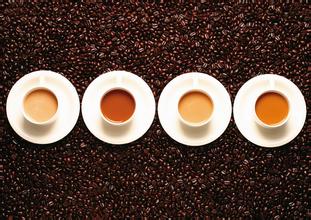Introduction to El Salvador Pacamara Coffee Flavor description Grinding scale Variety Manor
Pakamara
Finca Ataisi Manor is located in the volcanic producing area of Izalco (Izakou), Sonsonate Province, El Salvador. Due to volcanoes, the soil of the manor is very rich in organic matter. The average elevation of the manor is about 1800 meters and the terrain is steep. It is one of the highest manors in the area. At present, the owner of the manor is run by Mr. Rene Martin. Mr. Rene Martin's idea is to maintain the original traditional planting mode of El Salvador as far as possible. In addition to the necessary pruning and irrigation outside the garden to maintain a wide range of natural agroforestry ecology, more than 90% of the manor planted Pakamara varieties in addition to excellent planting, Finca Ataisi Manor also has its own coffee washing facilities, in addition to avoiding price exploitation to outsiders, the best thing is that it can be more rigorous in handling the coffee red fruits harvested from carefully selected oysters. Rene Martin is very strict in the process of washing treatment. In addition to regularly recording the temperature and humidity of the day, more attention should be paid to the treatment of raw coffee beans in the fermentation tank.
Variety producing area
It was first cultivated by El Salvador and is still the main producing area in El Salvador. In addition, there are also many plants in Central and American countries, such as Nicaragua.
Variety flavor
Keywords: chocolate chocolate, high alcohol big body, balanced balance. Variety becomes famous
Pacamara is another example of making a name for itself through COE events. In the 90s of the 20th century, some farmers in the Chalatenango producing area of South Song in Charat, El Salvador began to grow Pracamara. In 2006, a farm in this producing area took part in the competition with Pacamara and got the second place. In 2007, a number of farms in the same production area took part in the competition with Pacamara and won the first, third and fourth places. The brilliant achievements made Pacamara pay attention to the origin of the variety.
Pacamara is an artificial hybrid of Pacas and Maragogype, which was first bred by Salvadoran research institutions in the 1950s (mostly 1958). The new variety is considered to be the result of the pursuit of large grain Arabica species and inherits the good characters of the parent plant. Pacas, which has Bourbon lineage, is a native variety of El Salvador and inherits the excellent flavor of the ancient species of bourbon. It was first discovered in 1949. Maragogype is a variety of Typica that first appeared in Brazil. Because of its large bean body, it is known as "elephant bean" elephant bean.
Pacamara (Pacamara): the pedigree is very complex. It is a hybrid of the Tibika variety elephant bean and the bourbon variety Pacas. Huge beans, second only to elephant beans, is a rising star in El Salvador and a hybrid breed of high-quality coffee all over the world in the past two years. Won two ○○ seven Guatemala and Honduras [COE] double championships, but also arranged to host the top three awards in El Salvador. The name "Pacamara" is very good. It is a compound word of Pacas [Pacas] and elephant bean [Maragogepe]. Pacamara is an excellent variety produced by the Salvadoran Coffee Research Institute from 1957 to 1958. It was not until recent years that it became the darling of fine coffee.

Important Notice :
前街咖啡 FrontStreet Coffee has moved to new addredd:
FrontStreet Coffee Address: 315,Donghua East Road,GuangZhou
Tel:020 38364473
- Prev

Structure diagram of Fuji coffee roaster-introduction of baking degree
Structure diagram of Fuji coffee roaster-introduction of baking degree. Although these are not very sophisticated professional models, as long as they are handled properly, the roasted coffee beans are still mellow. 1. Direct firing: ceramic roaster or pan direct fire appliance is the simplest. It can be a pan or a long handle ceramic roaster made in Japan. The ceramic roaster is closed and has the effect of stewing.
- Next

Can Arabica coffee beans be made by hand? the taste of price producing area is introduced.
Arabica coffee is deeply loved by Chinese people with a short history of coffee contact because of its strong fruity aroma. it was introduced to China by missionaries in the 19th century. It is widely planted in Panzhihua, Sichuan, and the dry-hot valley of the Jinsha River, which is more than 1000 meters above sea level in western Yunnan. The sunshine time in this area is long and the temperature difference between day and night is great. The local people use the way of diverting water up the mountain to solve the lack of seasonal rainfall.
Related
- Beginners will see the "Coffee pull flower" guide!
- What is the difference between ice blog purified milk and ordinary milk coffee?
- Why is the Philippines the largest producer of crops in Liberia?
- For coffee extraction, should the fine powder be retained?
- How does extracted espresso fill pressed powder? How much strength does it take to press the powder?
- How to make jasmine cold extract coffee? Is the jasmine + latte good?
- Will this little toy really make the coffee taste better? How does Lily Drip affect coffee extraction?
- Will the action of slapping the filter cup also affect coffee extraction?
- What's the difference between powder-to-water ratio and powder-to-liquid ratio?
- What is the Ethiopian local species? What does it have to do with Heirloom native species?

